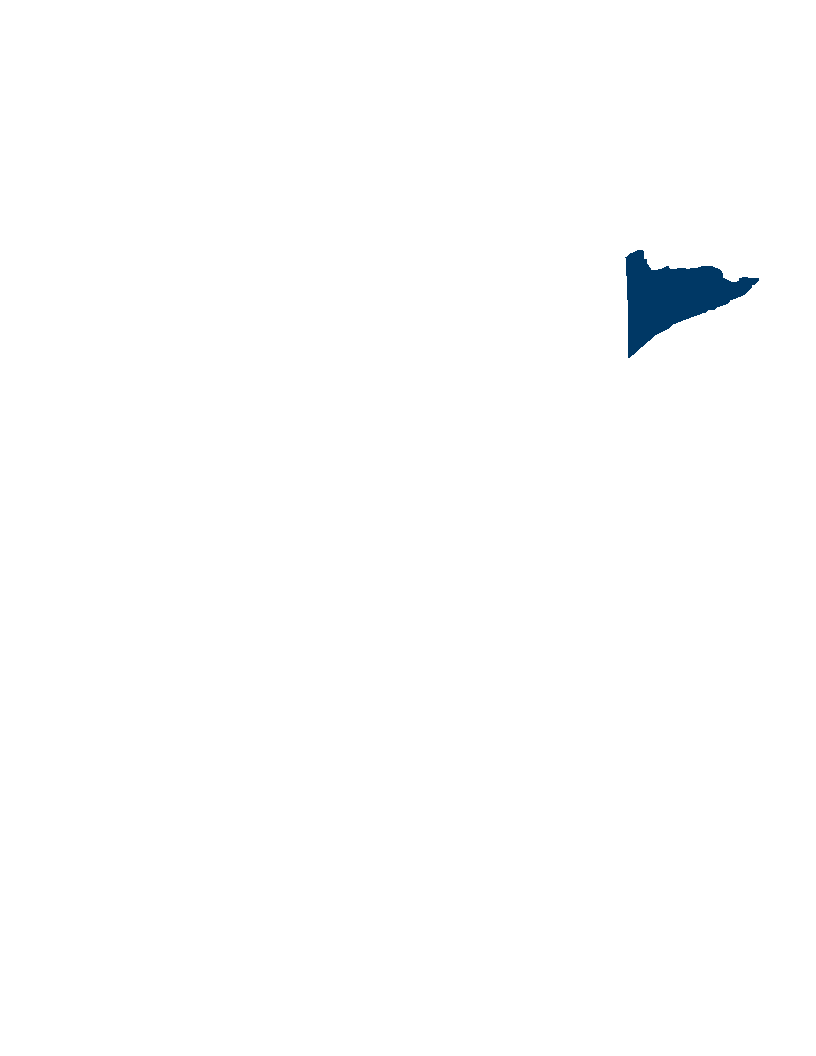Outdoor Heritage Conservation Partners Grant Program - FY 2011
The Conservation Partners Legacy Grant Program (CPL) is managed by the Minnesota Department of Natural Resources (DNR) to provide competitive matching grants of up to $400,000 to local, regional, state, and national non-profit organizations and governments. Grant activities include the enhancement, restoration, or protection of forests, wetlands, prairies, and habitat for fish, game, or wildlife in Minnesota. A match of at least 10% from nonstate sources was required for grants of $100,000 or less, and a match of at least 15% from nonstate sources was required for grants over $100,000. Up to one-third of the match may be in-kind resources. All match was identified at the time of application. CPL Program Staff developed a Request for Proposal and Program Manual, solicited applications and oversaw the grant selection process, prepared and executed grant documents, reviewed expenditure documentation, ensured recipients were only reimbursed for allowable expenses, monitored grant work, and assisted recipients with closing out grants. Up to 4% of the appropriation was used for administering the grant program.
Applicants applied for grants under this program to enhance, restore, or protect forests, wetlands, prairies and habitat for fish, game, or wildlife in Minnesota.
For projects that restore and/or enhance
1. Projects are only on lands under permanent protection of public fee ownership, or conservation easement as defined in MS 84C.01 or public ownership or in public waters as defined in MS 103G.005, subd. 15. Projects may be done on tribal lands under federal trust arrangements.
2. A conservation easement must be placed on any private land impacted before work may begin. Funding for the easement/deed restriction and associated costs may be paid for with in-kind match or grant funds.
3. Proposed projects on public lands are approved by and coordinated with public land managers. Projects proposed for lands under permanent conservation easement are reviewed by the easement holder. Proof of review or approval must be submitted to grant staff before the application deadline. The private landowner must agree to the project as well.
4. Grantees are responsible for all administrative requirements such as Historic Property Review, Wetland Conservation Act, Stormwater Permits, DNR Waters Permits, and others as appropriate. Costs for any reviews or permits should be included in the grant application, either as in-kind match or requested from grant dollars. As specified in the grant agreement, grantees may, by letter, assign duties and associated funds back to DNR, with DNR consent.
5. A Natural Heritage Review is required for each project site. This must be completed by the Land Manager or Easement Holder, or appropriate DNR staff, and submitted on the Land Manager Approval form. This form must be uploaded to the CPL Application System.
6. The Commissioner of Natural Resources must approve all projects.
7. All projects must meet requirements in the 2010 MN Session Law, Chapter 361, and follow the principles and criteria outlined in the L-SOHC FY 2011 Call for Funding Request.
For projects that will protect
1. Lands acquired in fee title will be open to the public for hunting and fishing during open seasons unless otherwise provided by law.
2. All easements must be permanent. Easements must include stewardship provisions to perpetually monitor and enforce the conditions of the easements.
3. Projects to acquire land in fee simple title or a permanent conservation easement must be associated with established land acquisition programs that use explicit criteria for evaluating a parcel's habitat potential.
4. Grantees must agree to abide by all L-SOHC requirements for long-term management of any lands acquired with Outdoor Heritage Funds (OHF).
5. For fee acquisition, the final title holder and land manager must be specified. Lands that will be conveyed to a public agency must be donated.
6. Some State programs have specific statutory guidelines for determining the value of easements acquired under that program. If the easement will become part of that State program and the easement will be held by the State, any entity acquiring the easement may use that program's statutory method for the easement valuation.
7. All acquisition selection processes and related transactions costs for all parties involved in the acquisition must be reported to the L-SOHC,
8. A Notice of Funding Restriction must be recorded for each acquisition.
9. An analysis of future operations and maintenance costs for any acquired lands must be provided to the L-SOHC, commissioner of finance, and appropriate public agency.
10.The grantee must submit an annual report on the status of property acquired with grant funds to the L-SOHC by December 1 of each year.
11.Grantees acquiring land that will be conveyed to DNR will be required to follow DNR's Land Acquisition Procedures for Lands to be Conveyed to DNR.
12. Grantees acquiring land that will NOT be conveyed to DNR will be required to follow DNR's Land Acquisition Procedures for Lands NOT to be Conveyed to DNR.
13.A Natural Heritage Review is required for each project site. This must be completed by the Land Manager or Easement Holder, or appropriate DNR staff and submitted on the Land Manager Approval form. This form must be, uploaded to the CPL Application System.
14.All projects must meet requirements in the 2010 MN Session Law, Chapter 361, and follow the principles and criteria outlined in the L-SOHC FY 2011 Call for Funding Request.
General Program Requirements
Funds for this program were available until June 30, 2014.
All grant projects must meet requirements of the 2010 MN Session Law, Chapter 361, and the L-SOHC's 2010 Call for Funding Requests. In addition, projects must address the priorities in the Minnesota Statewide Conservation and Preservation Plan, and Tomorrow's Habitat for the Wild and Rare. Capital expenditures and indirect costs are not allowed. In administering this program the DNR will comply with the Department of Administration, OGM policies.
Grantee Match
A match of at least 10% from nonstate sources was required for grants of $100,000 or less, and a match of at least 15% from nonstate sources was required for grants over $100,000. Up to one-third of the match may be in-kind resources. All match was identified at the time of application.
Grantee Payment
Grantees are paid on a reimbursement basis unless other arrangements are specified and approved in a grantee's application and work program. Reasonable amounts may be advanced to projects to accommodate cash flow needs, to match federal share, or for acquisitions. Advances must be specified in the grantee's application and final grant agreement or work program. Partial payments will be allowed. 5% of each grant was held back until a grant accomplishment report has been completed by the grantee.
Grant Process
A Request for Proposal (RFP) was posted on the CPL website in early August, 2010. The RFP contains grant program information, application criteria, application requirements, state agency contacts and grant reporting requirements. The RFP, Program Manual, and all grant agreements incorporate appropriate principles and criteria from the L-SOHC's 2010 Call for Funding Requests and associated legislation.
Applications were accepted electronically for two grant rounds. Any ungranted funds from the first cycle were available for use in following cycles.
Applications were submitted electronically using CPL's Online Grant Application System (OLGA). All project sites were mapped using OLGA's mapping tool. OLGA accepted applications beginning in August, 2010 until the deadline for the first round of grants in mid-September, 2010. The application system did not accept applications during the review process. OLGA was re-activated in December, 2010 mid-February, 2011 to accept applications for a second round of grants.
CPL Grant Program Staff reviewed applications to make sure they were complete and met grant program requirements. Technical Review Committee(s), selected by the Commissioner of Natural Resources reviewed and scored applications based on criteria established by the L-SOHC, MN State Legislature and DNR. These committees include representatives from DNR, BWSR, the University of MN, and the US Fish and Wildlife Service, and other appropriate members from both government and non-profit organizations. A final ranking committee made up of the Chief Financial Officer, and Directors of the DNR Divisions of Fish and Wildlife, Ecological Resources/Waters, and Forestry recommended projects and funding levels to the Commissioner of Natural Resources. The Commissioner made the final decision on the projects funded and funding levels. Projects may be fully or partially funded.
Every effort was made to evenly distribute the selected grants by geographic location, activity, and funding level, with an objective of granting 50% of the funds to projects above $125,000, and 50% of the funds to projects below $125,000.
CPL Grant Program staff work with grantees to ensure financial reviews, grant agreements, and any other necessary paperwork are completed. Work may not begin until the grant is executed.
Project Reviews and Reporting
Project reviews are completed as required by Office of Grants Management Policy 08-10, Monitoring.
Grantees report accomplishments on a CPL Report Form by September 1 of each year. Reports must account for the use of grant and match funds, and outcomes in measures of wetlands, prairies, forests, and fish, game, and wildlife habitat restored, enhanced, and protected. The report must include an evaluation of these results. A final report was required by all grantees 30 days after project completion.
CPL Grant Program staff compile grantee reports and submit an annual accomplishment report to the L-SOHC by January 15 February 1 and October 15 August 1 of each year. This report contains information on the number of agreements made, amount of reimbursement paid to grantees, accomplishments by grantees, number and status of remaining open agreements, and administrative costs. Accomplishment information is also be posted on L-SOHC and DNR websites.
Relationship to Minnesota Conservation and Preservation Plan and other published resource management plans.
This program provides additional funds to enhance, restore, and protect habitat in Minnesota. All published resource management and species plans?including the Minnesota Conservation and Preservation Plan?recognize that habitat is critical for the success of Minnesota's fish and wildlife species. Lack of funding is consistently listed in many plans as one of the largest issues limiting the amount of habitat work and protection that is completed each year.
In the Minnesota Conservation and Preservation Plan, habitat restoration and enhancement is specified in the following priorities:
H1: Protect priority land habitats (pg 63)
H2: Protect critical shorelands of streams and lakes (pg 67)
H4: Restore and protect shallow lakes (pg 78)
H5: Restore land, wetlands, and associated wetlands (pg 80)
H7: Keep water on the landscape (pg 84)
LU 8: Protect large blocks of forested land (pg 130)
L10: Support and expand sustainable practices on working forested lands (pg 131)
Other plans that list habitat restoration, enhancement and protection as priorities include:
Tomorrow's Habitat for the Wild and Rare (Minnesota's Comprehensive Wildlife Conservation Strategy), which identifies habitat loss and degradation as the primary problem facing species in greatest conservation need in Minnesota.
The State Comprehensive Outdoor Recreation Plan Strategies #1 and 2.
The DNR's Division of Fish and Wildlife has several key plans identifying acquisition and habitat goals for fish and wildlife populations. Habitat goals are also addressed through more focused plans and programs that can be found on the DNR's website.
National plans include the North American Wetland Management Plan, various Joint Venture Plans, National Fish Habitat Initiative, and all the Bird Conservation Plans.
Non-governmental conservation agencies such as Ducks Unlimited, The Nature Conservancy, and Audubon Minnesota have developed their own conservation plans that list habitat restoration, enhancement and protection as a priority.
Background:
Applicants applied for grants under this program to enhance, restore, or protect forests, wetlands, prairies and habitat for fish, game, or wildlife in Minnesota.
For projects that restore and/or enhance
1. Projects will be only on lands under permanent protection of public fee ownership, or conservation easement as defined in MS 84C.01 or public ownership or in public waters as defined in MS 103G.005, subd. 15. Projects may be done on tribal lands under federal trust arrangements.
2. A conservation easement must be placed on any private land impacted before work may begin. Funding for the easement/deed restriction and associated costs may be paid for with in-kind match or grant funds.
3. Proposed projects on public lands will be approved by and coordinated with public land managers. Projects proposed for lands under permanent conservation easement will be reviewed by the easement holder. Proof of review or approval must be submitted to grant staff before the application deadline. The private landowner must agree to the project as well.
4. Grantees will be responsible for all administrative requirements such as Historic Property Review, Wetland Conservation Act, Stormwater Permits, DNR Waters Permits, and others as appropriate. Costs for any reviews or permits should be included in the grant application, either as in-kind match or requested from grant dollars. As specified in the grant agreement, grantees may, by letter, assign duties and associated funds back to DNR, with DNR consent.
5. A Natural Heritage Review is required for each project site. This must be completed by the Land Manager or Easement Holder, or appropriate DNR staff, and submitted on the Land Manager Approval form. This form must be uploaded to the CPL Application System.
6. The Commissioner of Natural Resources must approve all projects.
7. All projects must meet requirements in the 2010 MN Session Law, Chapter 361, and follow the principles and criteria outlined in the L-SOHC FY 2011 Call for Funding Request.
For projects that protect
1. Lands acquired in fee title will be open to the public for hunting and fishing during open seasons unless otherwise provided by law.
2. All easements must be permanent. Easements must include stewardship provisions to perpetually monitor and enforce the conditions of the easements.
3. Projects to acquire land in fee simple title or a permanent conservation easement must be associated with established land acquisition programs that use explicit criteria for evaluating a parcel’s habitat potential.
4. Grantees must agree to abide by all L-SOHC requirements for long-term management of any lands acquired with Outdoor Heritage Funds (OHF).
5. For fee acquisition, the final title holder and land manager must be specified. Lands that will be conveyed to a public agency must be donated.
6. Some State programs have specific statutory guidelines for determining the value of easements acquired under that program. If the easement will become part of that State program and the easement will be held by the State, any entity acquiring the easement may use that program’s statutory method for the easement valuation.
7. All acquisition selection processes and related transactions costs for all parties involved in the acquisition must be reported to the L-SOHC,
8. A Notice of Funding Restriction must be recorded for each acquisition.
9. An analysis of future operations and maintenance costs for any acquired lands must be provided to the L-SOHC, commissioner of finance, and appropriate public agency.
10. The grantee must submit an annual report on the status of property acquired with grant funds to the L-SOHC by December 1 of each year.
11. Grantees acquiring land that will be conveyed to DNR will be required to follow DNR’s Land Acquisition Procedures for Lands to be Conveyed to DNR.
12. Grantees acquiring land that will NOT be conveyed to DNR will be required to follow DNR’s Land Acquisition Procedures for Lands NOT to be Conveyed to DNR.
13. A Natural Heritage Review is required for each project site. This must be completed by the Land Manager or Easement Holder, or appropriate DNR staff and submitted on the Land Manager Approval form. This form must be, uploaded to the CPL Application System.
14. All projects must meet requirements in the 2010 MN Session Law, Chapter 361, and follow the principles and criteria outlined in the L-SOHC FY 2011 Call for Funding
General Program Requirements
Funds for this program were available until June 30, 2014.
All grant projects met requirements of the 2010 MN Session Law, Chapter 361, and the L-SOHC’s 2010 Call for Funding Requests. In addition, projects addressed the priorities in the Minnesota Statewide Conservation and Preservation Plan, and Tomorrow's Habitat for the Wild and Rare. Capital expenditures and indirect costs were not allowed. In administering this program the DNR complied with the Department of Administration - Office of Grants Management policies.
Grantee Match
A match of at least 10% from nonstate sources was required for grants of $100,000 or less, and a match of at least 15% from nonstate sources was required for grants over $100,000. Up to one-third of the match may be in-kind resources. All match must be identified at the time of application.
Grantee Payment
Grantees were paid on a reimbursement basis unless other arrangements were specified and approved in a grantee’s application and work program. Reasonable amounts may be advanced to projects to accommodate cash flow needs, to match federal share, or for acquisitions. Advances must be specified in the grantee’s application and final grant agreement or work program. Partial payments were allowed. 5% of each grant was held back until a grant accomplishment report had been completed by the grantee.
Grant Process
A Request for Proposal (RFP) was posted on the CPL website in early August, 2010. The RFP contained grant program information, application criteria, application requirements, state agency contacts and grant reporting requirements. The RFP, Program Manual, and all grant agreements incorporated appropriate principles and criteria from the L-SOHC’s 2010 Call for Funding Requests and associated legislation.
Applications were accepted electronically, with grants selected for funding twice a year. Any ungranted funds from the first cycle were available for use in a following cycle.
Applications were submitted electronically using CPL’s Online Grant Application System (OLGA). All project sites were mapped using OLGA’s mapping tool. OLGA accepted applications beginning in August, 2010 until the deadline for the first round of grants in mid-September, 2010. The application system did not accept applications during the review process. OLGA was re-activated in mid-February, 2011 to accept applications for a second round of grants.
CPL Grant Program Staff reviewed applications to make sure they were complete and met grant program requirements. Technical Review Committee(s), selected by the Commissioner of Natural Resources reviewed and scored applications based on criteria established by the L-SOHC, MN State Legislature and DNR. These committees included representatives from DNR, BWSR, the University of MN, and the US Fish and Wildlife Service, and other appropriate members from both government and non-profit organizations. A final ranking committee made up of the Chief Financial Officer, and Directors of the DNR Divisions of Fish and Wildlife, Ecological Resources/Waters, and Forestry recommended projects and funding levels to the Commissioner of Natural Resources. The Commissioner made the final decision on the projects funded and funding levels.
Every effort was made to evenly distribute the selected grants by geographic location, activity, and funding level, with an objective of granting 50% of the funds to projects above $125,000, and 50% of the funds to projects below $125,000.
CPL Grant Program staff work with grantees to ensure financial reviews, grant agreements, and any other necessary paperwork are completed. Work could not begin until the grant was executed.
Project Reviews and Reporting
Project reviews were completed as required by Office of Grants Management Policy 08-10, Grant Monitoring.
Grantees reported accomplishments on a CPL Report Form by September 1 of each year. Reports account for the use of grant and match funds, and outcomes in measures of wetlands, prairies, forests, and fish, game, and wildlife habitat restored, enhanced, and protected. The report included an evaluation of these results. A final report was required by all grantees 30 days after the project was complete.
CPL Grant Program staff compiled grantee reports and submitted an annual accomplishment report to the L-SOHC by February 1 and August 1 of each year. This report contained information on the number of agreements made, amount of reimbursement paid to grantees, accomplishments by grantees, number and status of remaining open agreements, and administrative costs. Accomplishment information was also posted on L-SOHC and DNR websites.
$4,386,000 in fiscal year 2011 is to the commissioner of natural resources for a program to provide competitive, matching grants of up to $400,000 to local, regional, state, and national organizations, including government, for enhancement, restoration, or protection of forests, wetlands, prairies, and habitat for fish, game, or wildlife in Minnesota. Up to four percent of this appropriation may be used by the commissioner of natural resources for administering the grant program. Grantees may acquire land or interests in land. Easements must be permanent. Land acquired in fee must be open to hunting and fishing during the open season unless otherwise provided by state law. The commissioner of natural resources must agree in writing to each proposed acquisition of land or interest in land. The program shall require a match of at least ten percent from nonstate sources for grants of $100,000 or less and a match of at least 15 percent from nonstate sources for grants over $100,000. Up to one-third of the match may be in-kind resources. The criteria for evaluating grant applications must include, in a balanced and equally weighted order of precedence, the amount of habitat restored, enhanced, or protected; local support; degree of collaboration; urgency; capacity to achieve multiple benefits; habitat benefits provided; consistency with current conservation science; adjacency to protected lands; full funding of the project; supplementing existing funding; public access for hunting and fishing during the open season; sustainability; and use of native plant materials. All projects must conform to the Minnesota statewide conservation and preservation plan. Wildlife habitat projects must also conform to the Minnesota wildlife action plan. Subject to the evaluation criteria and requirements of this paragraph and Minnesota Statutes, the commissioner of natural resources shall give priority to organizations that have a history or charter to receive private contributions for local conservation or habitat projects when evaluating projects of equal value. Priority may be given to projects acquiring land or easements associated with existing wildlife management areas. All restoration or enhancement projects must be on land permanently protected by conservation easement or public ownership or in public waters as defined in Minnesota Statutes, section 103G.005, subdivision 15. Subdivision 9 applies to grants awarded under this paragraph. All restorations must comply with subdivision 9, paragraph (b). This appropriation is available until June 30, 2014, at which time all grant project work must be completed and final products delivered, unless an earlier date is specified in the grant agreement. No less than five percent of the amount of each grant must be held back from reimbursement until the grant recipient has completed a grant accomplishment report by the deadline and in the form prescribed by and satisfactory to the Lessard-Sams Outdoor Heritage Council.
Forestlands are protected from development and fragmentation
Increased availability and improved condition of riparian forests and other habitat corridors
Healthy populations of endangered, threatened, and special concern species as well as more common species
Improved aquatic habitat indicators
Improved aquatic habitat indicators
Wetland and upland complexes will consist of native prairies, restored prairies, quality grasslands, and restored shallow lakes and wetlands
Increased availability and improved condition of riparian forests and other habitat corridors
Water is kept on the land
Protected, restored, and enhanced aspen parklands and riparian areas
Protected, restored, and enhanced nesting and migratory habitat for waterfowl, upland birds, and species of greatest conservation need
A network of natural land and riparian habitats will connect corridors for wildlife and species in greatest conservation need
Protected habitats will hold wetlands and shallow lakes open to public recreation and hunting
Core areas protected with highly biologically diverse wetlands and plant communities, including native prairie, Big Woods, and oak savanna
Improved aquatic habitat indicators
Healthier populations of endangered, threatened, and special concern species as well as more common species
High priority riparian lands, forestlands, and savannas are protected from parcelization and fragmentation
Rivers, streams, and surrounding vegetation provide corridors of habitat
Improved aquatic habitat indicators
Stream to bluff habitat restoration and enhancement will keep water on the land to slow runoff and degradation of aquatic habitat
Core areas protected with highly biologically diverse wetlands and plant communities, including native prairie, Big Woods, and oak savanna
Protected, restored, and enhanced shallow lakes and wetlands
Remnant native prairies and wetlands are permanently protected and are part of large complexes of restored prairie, grasslands, and large and small wetlands
Improved condition of habitat on public lands
Water is kept on the land
Protected, restored, and enhanced habitat for waterfowl, upland birds, and species of greatest conservation nee
8750 acres
































